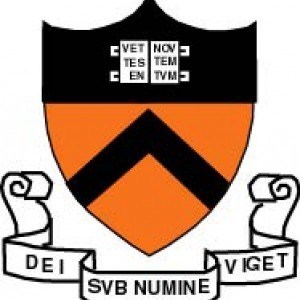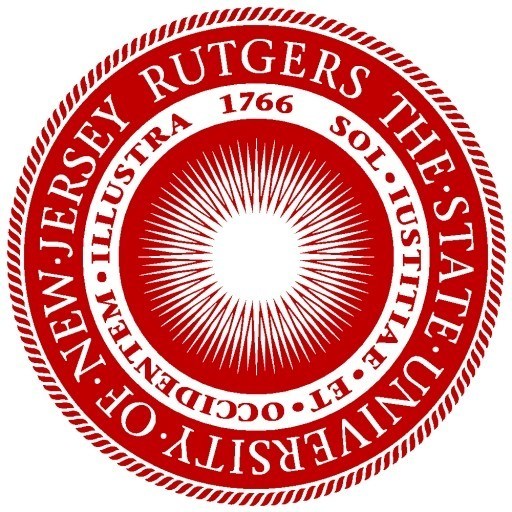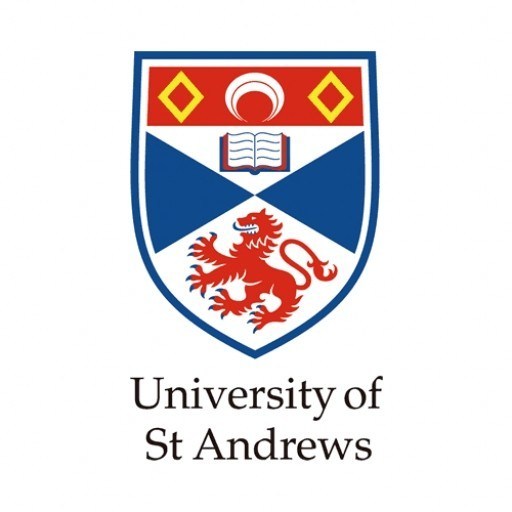Photos of university / #Princeton
The study of Astrophysics -- understanding the universe in which we live -- has been an exciting field of exploration for centuries. How big is the Universe? How did it start and what is its fate? What's out there in deep space? What are the stars and galaxies made of? What makes them shine? How many planets orbit other stars, and what are their properties? These fundamental questions have occupied peoples' thoughts for generations in an attempt to uncover the mysteries of the Universe. Remarkable discoveries have been made in astrophysics in recent time ranging from the Big Bang and the early Universe, to the Cosmic Microwave Background and its fluctuation spectrum, to measurements of the large-scale structure in the Universe, the existence of Dark Matter and Dark Energy, the discovery of Supermassive Black Holes, and the discovery of planets around other stars. These discoveries have provided some answers to these fundamental questions. Among others, the data revealed a strange Universe dominated by a yet mysterious Dark Energy (~70% by mass) that causes the expansion rate of the Universe to accelerate, followed by a yet undetected exotic (non-baryonic) Dark Matter particles (~25%), with only the remaining ~5% of the universe made up by normal baryonic matter (i.e., stars, galaxies, and gas). New discoveries have also spurred new fundamental questions: What is the nature of the Dark Matter and the Dark Energy? How do planets form around stars? How does life form on planets (the new field of Astro-biology)? How do supermassive black holes form?
Observations needed to probe the universe and answer these questions are carried out mostly with telescopes, not only the familiar ones sensitive to optical light rays, but also with instruments designed to receive radio waves, X-rays, and Gamma-rays. Within the solar system, astronomers use space probes. The vast amount of observational detail obtained with these techniques is then interpreted by means of the basic laws of physics. Especially in recent decades, the new tools of radio telescopes on the ground and X-ray, optical, and ultraviolet telescopes in space have permitted us to make the startling discoveries about the heavens mentioned above. In addition, we now know, for example, of dense stars that consist almost entirely of neutrons, with the same amount of material as in the Sun compressed into a sphere only a few miles in diameter, with a resultant density of millions of tons packed into each cubic inch. We find even smaller, more massive, objects -- black holes -- whose gravitational attraction is so great that any light waves from the surface cannot escape but are attracted back. We find that most galaxies contain a supermassive black hole, of many millions or even billions solar masses, at their cores. Gigantic explosions of stars within individual galaxies -- supernovae and gamma-ray bursts -- have been found to radiate as much light as billions of suns. Such explosions have been detected in systems as far out as nearly the edge of the accessible Universe, where stellar systems are moving away from us at close to the speed of light, and from which the light rays we now see were emitted billions of years ago when the Universe was much younger. The Cosmic Microwave Background radiation -- a 3K degree radiation that is a remnant of the hot Big Bang some 14 billion years ago -- has been measured in detail. This radiation is remarkably uniform. However, on top of this highly uniform distribution, the tiny fluctuations that provided the seeds for galaxy and structure formation in the early universe have been detected and carefully mapped, a discovery of great importance for understanding how the structure we see today formed. While such discoveries are fascinating in their own right, they cast light on the fundamental questions that people have been asking since the dawn of mankind about the hidden nature of our Universe.
We explore these properties of the Universe in our Department of Astrophysical Sciences at Princeton. We research these topics using both observational and data-analysis tools, as well as extensive theoretical and computational techniques. The undergraduate program in Astrophysics is relatively small but increasing, typically fifteen to twenty Astrophysics majors annually. Our program is flexible and is open to a broad range of student interests -- from those interested in continuing their science education in Astrophysics graduate schools to those interested in fields such as science policy, science education, space science, astro-biology, as well as students who plan to go into finance, law, and medicine. For those who are fascinated by the prospect of contributing to the search for the universe's hidden secrets, the rewards of our Astrophysics program are great.
Our program consists of two components, course work and independent research projects under the close supervision of a faculty member. The course work is designed to give a solid background in the relevant areas of physics and math and to survey several of the currently most active areas of astrophysical research. We place a particularly strong emphasis on the independent research component, which allows students to carry out cutting-edge original research in astrophysics and to gain a working experience of what it is like to do professional astronomical research. A measure of our success is that a substantial fraction of our graduating seniors have co-authored one or more scientific papers published in the astronomical literature as a result of their junior paper or senior thesis work. Another measure of our program's overall effectiveness and, perhaps more importantly, of the quality of the students at Princeton, is the remarkable success our students have achieved in their graduate school applications and jobs they follow. Our graduates go to graduate schools such as Berkeley, Cal Tech, Chicago, Cornell, Harvard, Santa Cruz and other top schools. While many of our graduates continue in Astrophysics graduate school and a career in academia, our program is very broad; a significant number of our students continue in other directions, including science policy, science education (one recent graduate is now the Director of Education at a major Planetarium), space science, biology and astro-biology, as well as in finance, law school, and medical school. Many of our students are winners of honorific fellowships. Our program is a rigorous one, intended to challenge and serve the first-class students that Princeton regularly attracts. In addition to the scientific excellence of the department, its relatively small size allows for an informal atmosphere and a highly accessible faculty, both of which are greatly enjoyed by our majors. Our program provides outstanding personal mentoring to the students and a family-like atmosphere, and is flexible and adaptive to the student needs and future plans.
Princeton is part of the Sloan Digital Sky Survey (SDSS), the largest 3-D survey ever carried out of the Universe. The SDSS is a multi-institution collaboration to map the Universe in three-dimensions by obtaining digital images of the entire northern high-latitude sky and redshifts of one million galaxies. Princeton students and faculty have used the Sloan Survey data to make exciting fundamental discoveries -- such as the discovery of the most distant quasars known in the universe and the coolest known stars. Undergraduate majors are working on the scientific analysis from this unique and most exciting survey and participate in its discoveries.
Princeton has been a leading partner in the Wilkinson Microwave Anisotropy Probe (WMAP) that measured the temperature and polarization of the Cosmic Microwave Background fluctuations across the whole sky and enabled accurate determination of cosmological parameters of the universe. Princeton is leading the Atacama Cosmology Telescope (ACT) project, which measures a patch of the Southern sky with 10 times the resolution of WMAP. Both the physics and astronomy department are active in research in cosmology. Princeton is also the lead institution for the Southern Cosmology Survey. Undergraduates who are part of this program will have the opportunity to do research in either South Africa or Chile.
Princeton joined our Japanese colleagues in carrying out a major new scientific survey, deeper than our previous Sloan Survey, and using the large SUBARU telescope in Hawaii. This deeper survey of the cosmos will study the evolution of galaxies, quasars, and large-scale structure from earlier time to today, and determine the mass distribution in the universe as observed by gravitational lensing measurements, among many other interesting topics.
Princeton faculty lead the HAT project to discover extra-solar planets orbiting other stars and investigate their properties. Many new exoplanets have been discovered by the HAT experiment, and many Astrophysics students participate in these discoveries.
PREREQUISITES: Students interested in majoring in astrophysics are required to complete the following courses during their 1st and 2nd year
- Physics 103 or 105: Classical Mechanics
- Physics 104 or 106: Electromagnetism
- Physics 207 or 205: Advanced Mechanics
- Astrophysics 204: Topics in Modern Astronomy (strongly recommended)
- Mathematics 103 and 104: Calculus
- Mathematics 201 or 203 or 218: Advanced Multivariable Calculus
- Mathematics 202 or 204 or 217: Linear Algebra
REQUIRED COURSES: Eight upper level courses are required for completing an Astro major.
(a) Students should complete at least three of the following four courses:
- Astrophysics 301: General Relativity
- Astrophysics 303: Modeling and Observing the Universe: Research Methods in Astrophysics
- Astrophysics 401: Cosmology
- Astrophysics 403: Stars and Star Formation
(b) Students should complete three of the following four courses:
- Physics 208: Principles of Quantum Mechanics
- Physics 301: Thermal Physics
- Physics 304: Advanced Electromagnetism
- Physics 305: Quantum Mechanics
(c) Students may select among the following (or other courses) to complete their eight required courses:
- Physics 312: Experimental Physics
- Physics 403: Mathematical Methods of Physics
- Physics 405: Modern Physics I: Condense-Matter Physics
- Physics 406: Modern Physics II: Nuclear and Elementary Particle Physics
- Physics 408: Modern Classical Dynamics
- Mathematics 301/MAE305: Mathematics in Engineering I (ODE's).
- Mathematics 302/MAE306: Mathematics in Engineering II (OPDE's, complex analysis).
- Mathematics 317: Complex Analysis
- Mathematics 327/328: Differential Geometry
- Geology 427: Introduction to Terrestrial and Planetary Atmospheres
- Mechanical and Aerospace Engineering 341: Space Flight
- Mechanical and Aerospace Engineering 342: Space System Design
- Other upper-level science or math courses
(d) Other course selections or replacements allowed with departmental approval.
Recommended Courses in addition to the above:
- Computer Science 126: General Computer Science
- Math 309/ORF 309: Probability and Stochastic Systems
- Mechanical and Aerospace Eng. 222: Mechanics of Fluids
- The Common Application or the Universal College Application
- Princeton Supplement
- Transcript
- School Report
- Guidance Counselor Letter
- Two (2) Teacher Recommendations
- SAT with Essay or ACT with Writing
- Two (2) SAT Subject Tests (recommended, but not required)
- TOEFL, IELTS Academic or PTE Academic (nonnative speakers of English without 3 years of high school in English)
Scholarships
- Princeton Financial Aid







